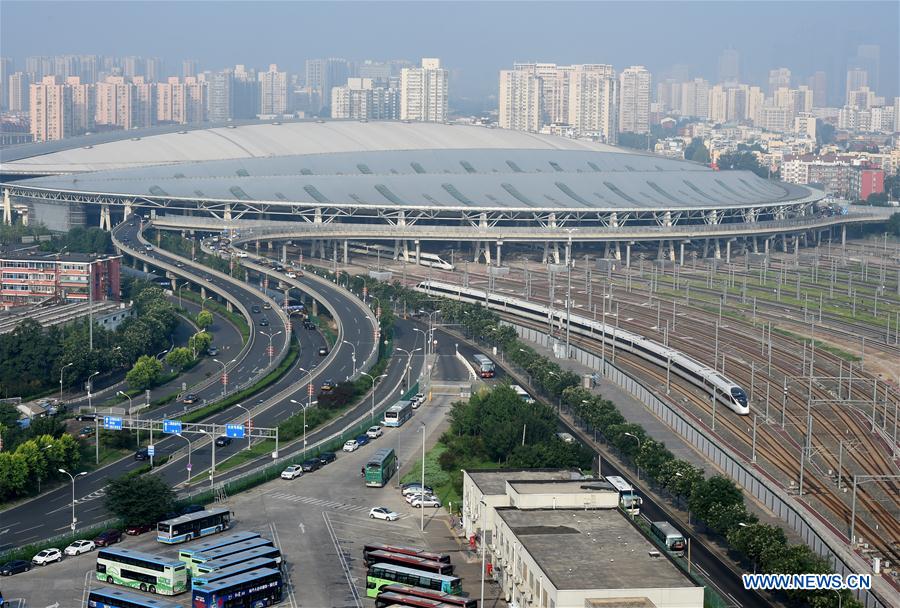
A Beijing-Tianjin high-speed intercity train departs the Beijing South Railway Station in Beijing, capital of China, Aug. 1, 2018. (Xinhua/Luo Xiaoguang)
Onboard the C2022 train, train attendant supervisor Xu Ying walks down the aisles to check luggage safety and sanitation conditions.
The high-speed train, running at over 300 km per hour, takes 35 minutes from Tianjin to Beijing.
Passengers read magazines, bury themselves in their phones or simply doze off, while waiting to arrive.
"Now people are used to high-speed trains, but the situation was different 10 years ago," Xu said. "Many left their seats to look here and there. Even the bathrooms became 'resorts.'"
On Aug. 1, 2008, the Beijing-Tianjin high-speed train service opened, China's first high-speed railway line.
FROM RARE TO ROUTINE
Many passengers, including those from abroad who came to watch the Beijing Olympics that year, simply wanted to experience travel by high-speed train.
"They kept staring at the display showing the train speed and watching outside to feel the train speed," Xu said.
Some passengers even excitedly asked Xu to pose for photos with them.
David Feng, a Swiss teaching at a Beijing university, wrote about his feelings onboard the fast train on that day. "Speeds maxed out at 348 km/h near the northern suburbs of Tianjin. It took me around just 30 minutes to change cities - something basically impossible to believe until that day."
The daily frequency of Beijing-Tianjin intercity trains has increased from 94 one-way services to 217, with 250 million passengers carried in the past decade, according to the Beijing railway bureau.
Njeri Kamau, from Kenya, teaches English at a kindergarten in Tianjin. She takes the high-speed train every Friday afternoon to meet her husband who works in Beijing.
"The high-speed train has made it so much easier to maintain the long distance [relationship]," she said.









